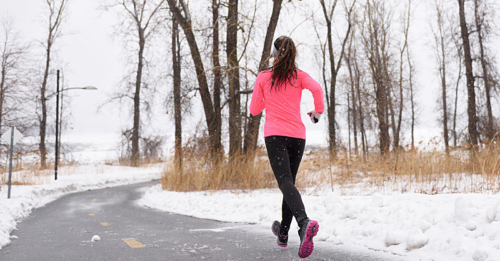Article by the Drummond Team
Have you added running to your New Years exercise regime? Here’s some helpful tips on how not to run yourself in to the ground – and lose your incentive!
It sounds easy. Put on your running shoes, point yourself in your chosen direction and run. The energy cost of running far out weighs most other activities.
The Calorific Cost of Exercise
- Running (6mph, 10 min/mile)= 0.16 (calories/min/kg)
- Cycling (12-14mph)= 0.14 (calories/min/kg)
- Walking (4mph, 15 min/mile= 0.08 (calories/min/kg)
- Sitting Activities (very light)= 0.03 (calories/min/kg)
It makes sense that going for a run not only get us outside in the fresh air, it also gives us the greatest calorific burn. But like all things that are seemingly good for us, there is a BUT. And the but is one of equipment, technique and posture. Let’s briefly examine what we can do to minimise the risk, maximise the enjoyment and get fitter.
Equipment
Buying new running shoes can be quite a stressful experience. There are a lot of different types of shoes out there from a neutral shoe to one’s that provides a lot of structural support. Finding the right shop is important. We are very much in the hands of the “experts” in whatever shop we choose.
Technique
Running is a very skill based activity. Unfortunately, for most of us there is a deficit in skill through lack of education. We do not get taught to run and so therefore, by virtue of application, we go from a walk to a jog, then a jog to a run, working our way up the scale of speed. By getting faster, this does not mean that we are ‘technically’ a better runner, but perhaps just stronger and fitter, which I suppose is the outcome we should hope for.
Flexibility – make sure that before you go running you stretch out any tightness that you may have. Alternatively have a short jog warm up (5mins or so) and then stop had have a short stretch before the main body of the run.
Stretches
- Calfs
- Quads
- Hamstrings
hold these stretches for about 10-15 seconds
Mobility – being mobile is a huge factor in allowing the body to be ready to run. tight joints especially the ankle, hip and low back complexes can really impact on how your body responds to running. Make sure that these areas are mobile by doing some mobility exercises with the stretching prior to the run starting
Mobilisers
- Knee bends
- Squats
- Ankle circling
- Hip swings
do 10 reps of each of these
Posture – whilst we are running it is vital that we think about our posture. In the early stages of a run we are generally not too fatigued, but as we progress over the half way mark, fatigue may ensue and you can be sure that your posture will change. As soon as this happens your running efficiency will drop off and may consequentially increase your chances of getting an injury.
- Posture Watch
- Be light on your feet
- Make as little noise as possible when running
- Feel bouncy with your legs
- Try and maintain a slight forward leaning posture by driving the hips forward
- Keep the elbows bent to 90 degrees, and keep the arms and shoulders relaxed
- Regulate your breathing
So there you have it. A small self help guide so you can start – and keep – running safely!
